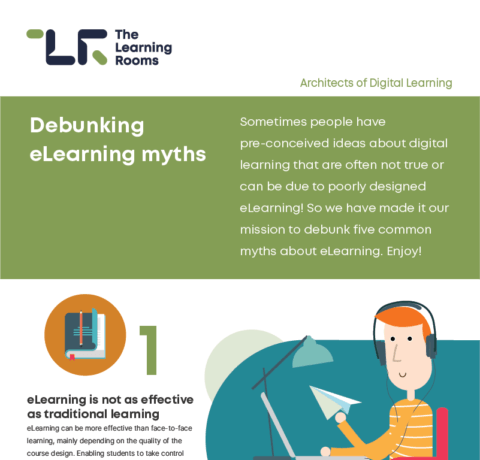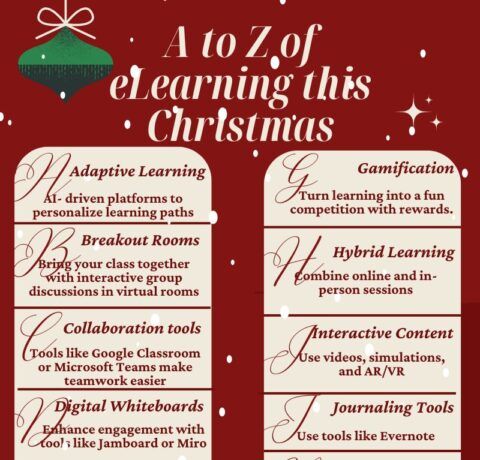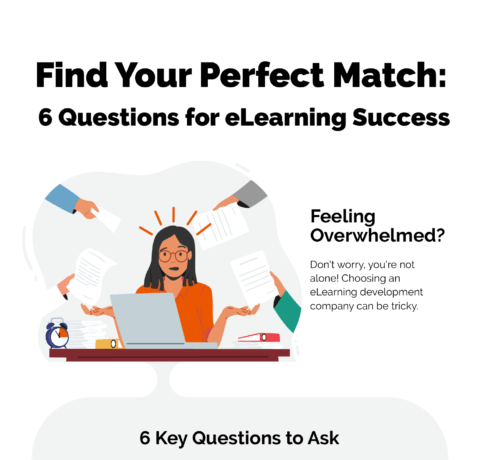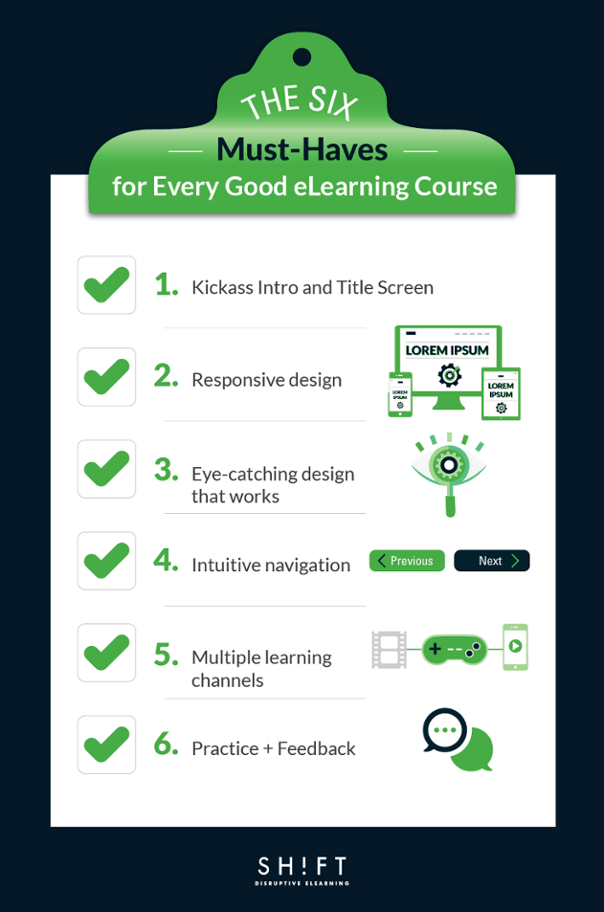6 Effective eLearning Course Must Haves Infographic
A good eLearning course is like a lip-smacking, mouth-watering, finger-licking meat pie. Every cook has a different recipe, but the essential ingredients are the same—a juicy, meaty filling; spicy seasonings; and two flaky crusts. There are no cookie-cutter ways to create memorable and effective eLearning courses; the needs vary across industries. But the essentials are the same. Time to go over these effective eLearning course must haves must haves.
1. A Knockout Intro and a Kickass Title Screen
The aim should be to make learners sit up, take notice, and be motivated to click through the rest of the course. The title slide and the intro are like the displays you put up on the storefront. The window-shopper is either enticed to step in or walks away uninterested.
2. Responsive Design
Responsive design is no longer an option; it is a necessity you cannot ignore. Make it easy and enjoyable for your learners to access your courses on any device they may carry. Else they will pass up your course.
3. Eye-Catching Design That Works
Effective design is the perfect blend of beauty and substance. High-quality eLearning design delivers the content in the most instructionally sound way. The content presented, the activities you design, and the assignments you include at the end of a lesson should map to the overarching learning outcomes. It helps if your course is packaged attractively. But be assured, you don’t have to be an artist to pack in a punch.
4. Intuitive Navigation
Your aim should be to create a user-friendly course that even a tech-unsavvy person can easily make his way through. When learners understand the navigation structure of the course and are convinced that they will be able to find their way around it, they feel assured and are more motivated to take the course.
5. Multiple Learning Channels
Exploit the ability of eLearning courses to weave in visual, auditory, and kinesthetic media to create interactive courses that provide immersive learning experiences.
6. Practice + Feedback
The more you let learners practice the skills they have learned, the more effective will be the learning. Repeated practice cements the learning in their minds and sharpens the skills they have acquired. Most importantly, practice activities drive engagement.
Of course, these practice activities should also provide immediate feedback to help learners gauge the efficacy of their learning. Feedback helps learners by correcting their mistakes, guiding them on the right track, and motivating them to carry on. Most importantly, feedback allows learners to pause and reflect on the learning.
See also:







You can adjust your cookie preferences here.